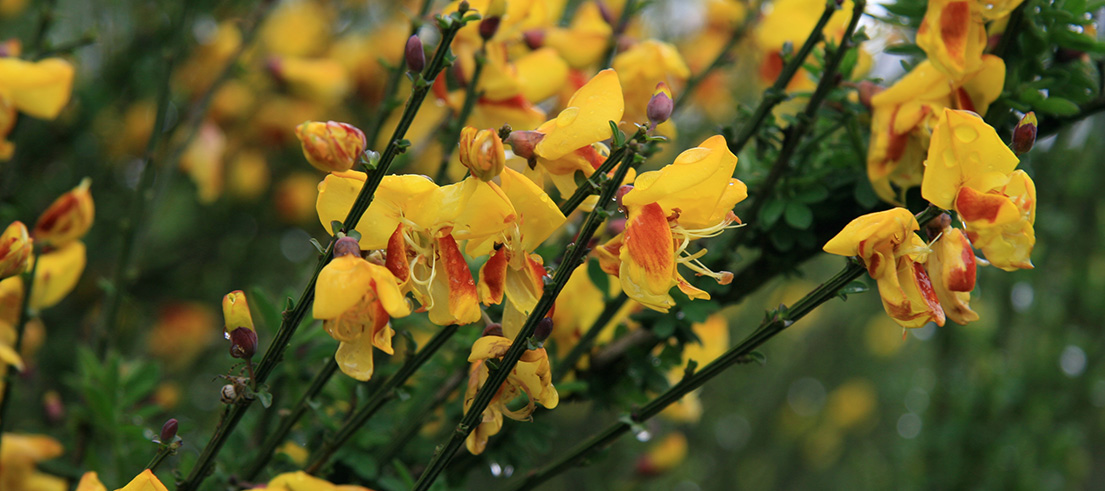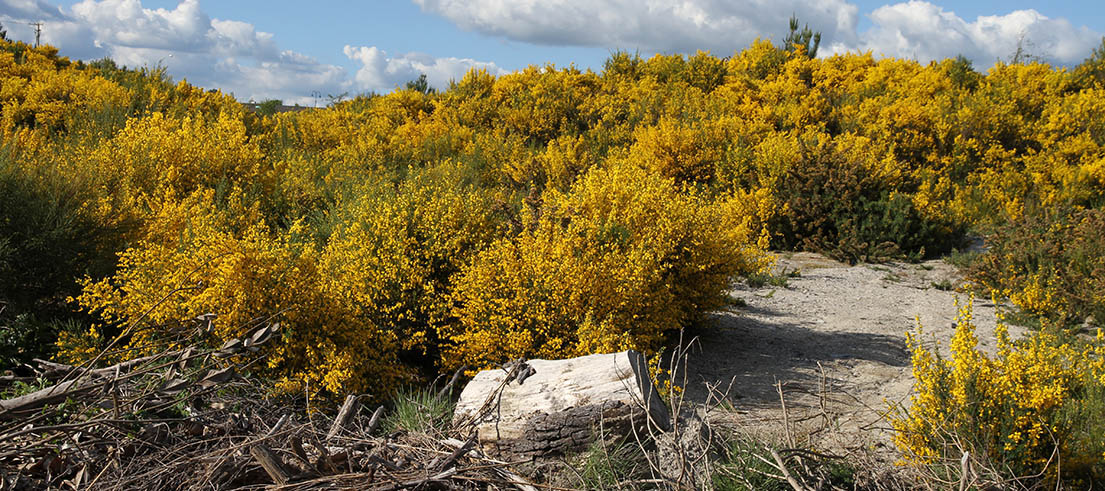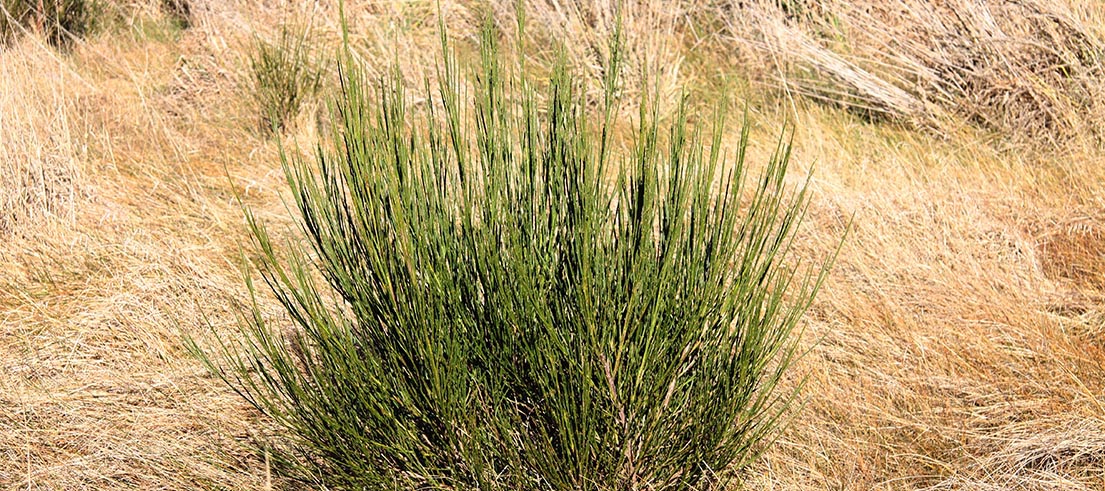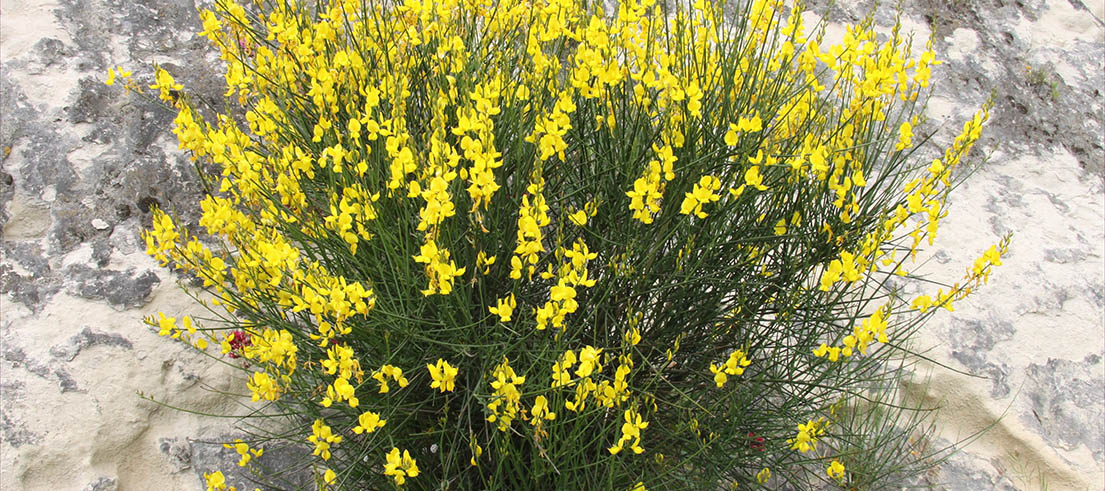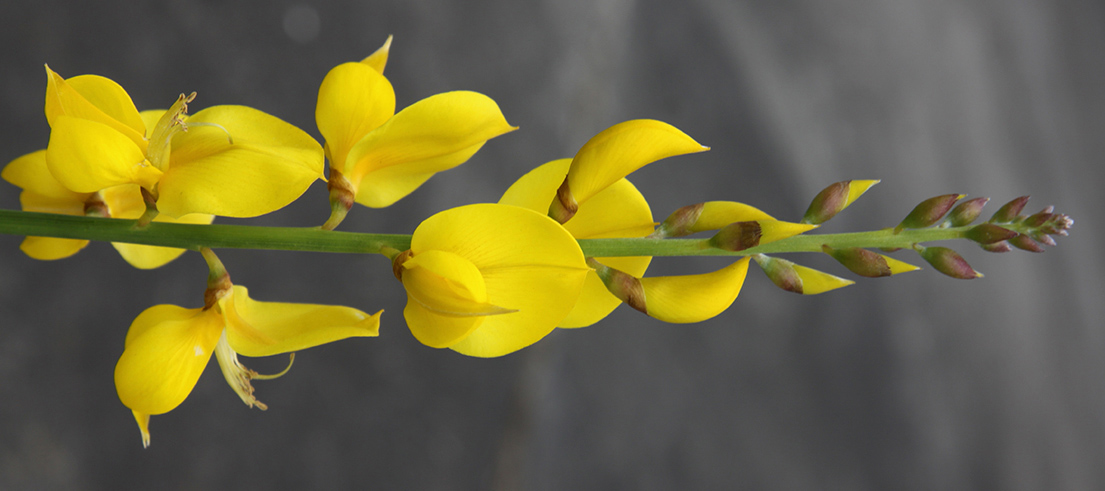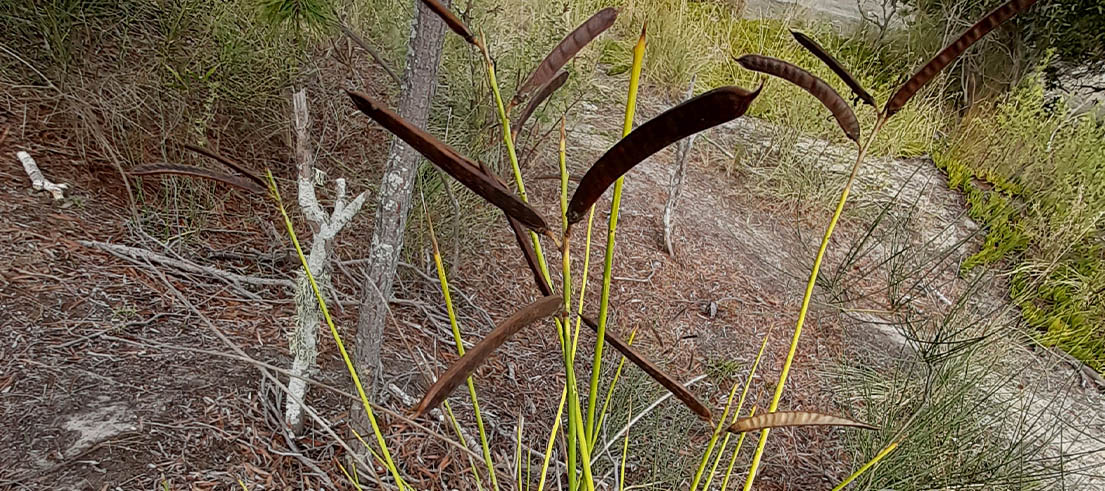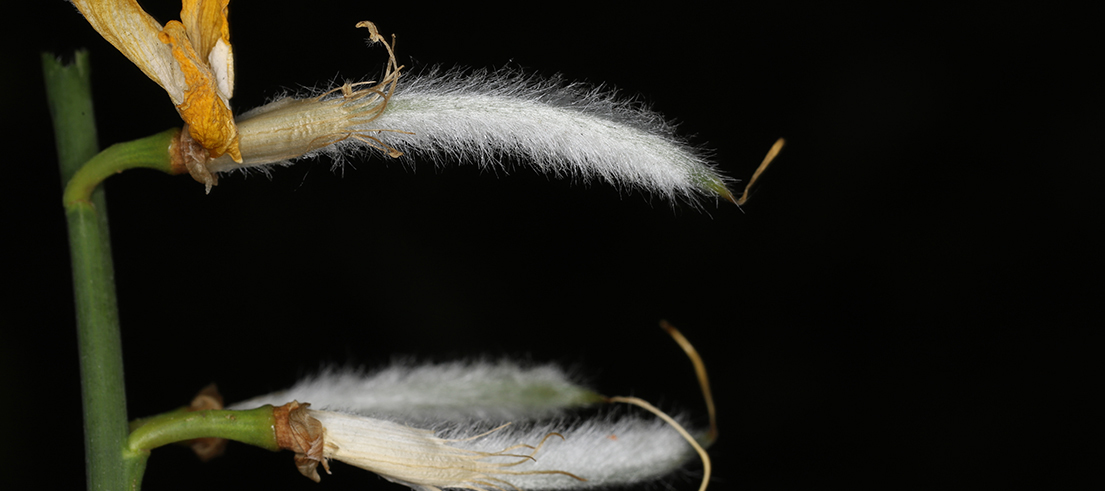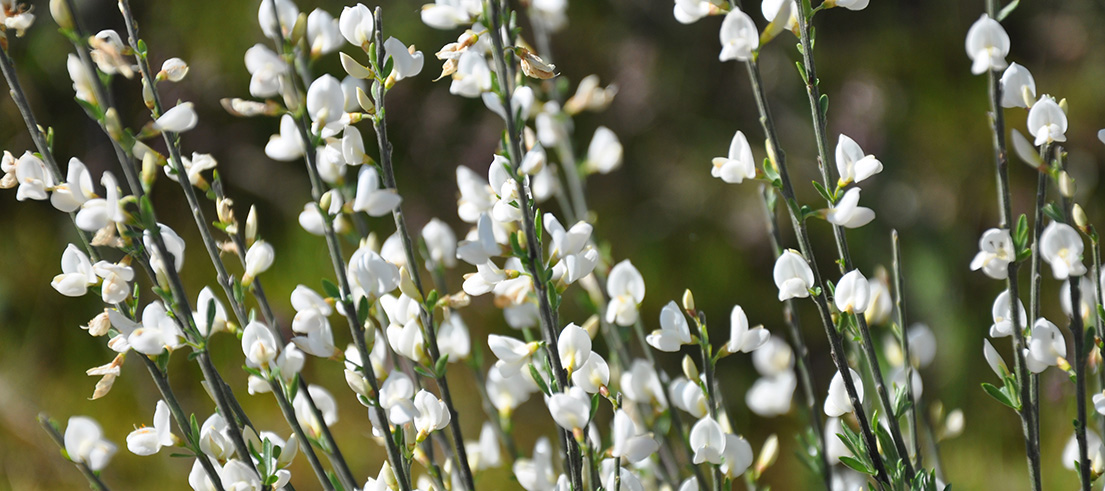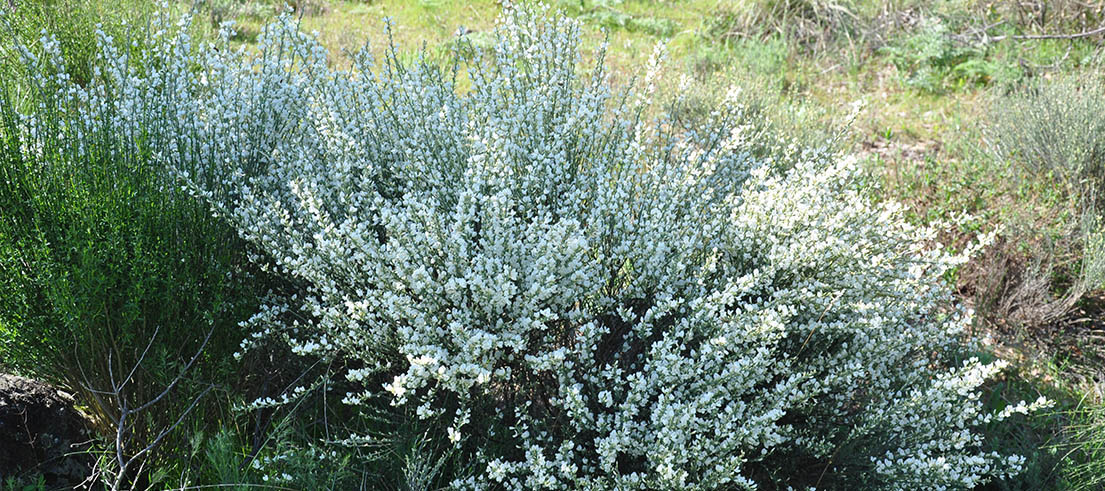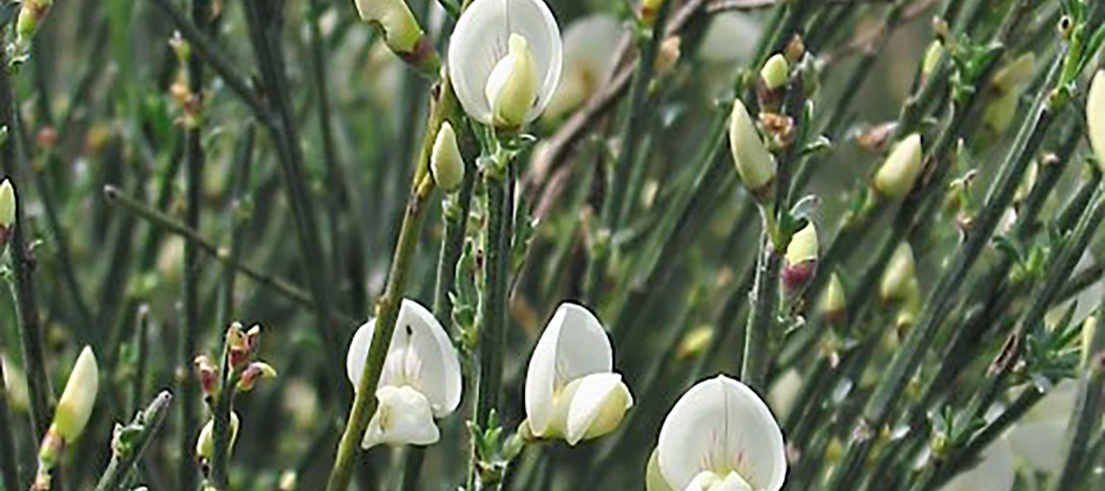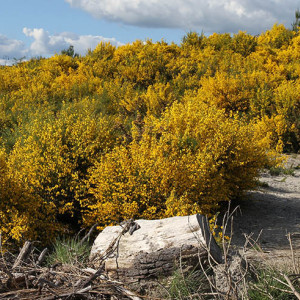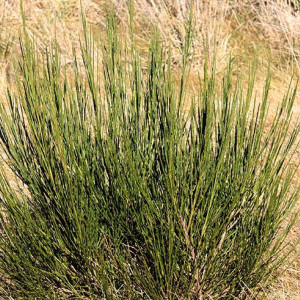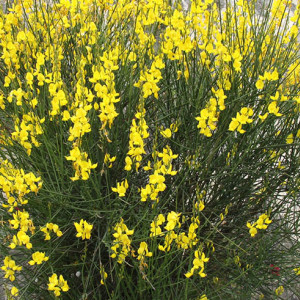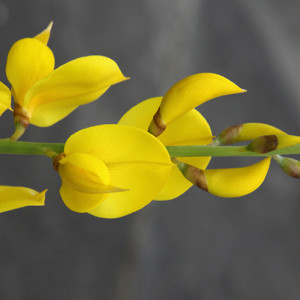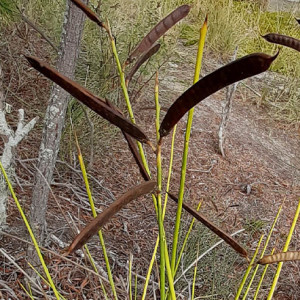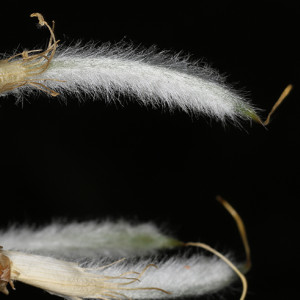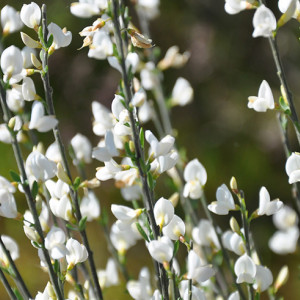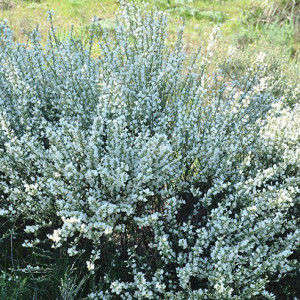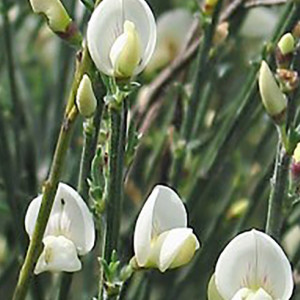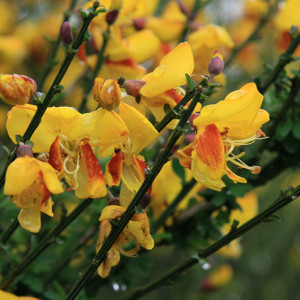This perennial shrub stands less than 3m tall and has yellow, pea-like flowers produced in spring and summer. Broom forms dense stands and outcompetes native vegetation. It reduces pasture and plantation productivity.
Description
- Dense, multi-stemmed perennial shrub.
- Stems are five-angled, green when young, turning woody with age.
- Hairy 15mm leaves are grouped in threes and deciduous.
- Seed pods are hairy and green-brown, maturing to black.
- White broom has white, pea-like flowers and is often marked with a dark pinkish streak near the base.
- Seeds are dispersed by explosive seedpods and contaminated soil on livestock. Human-mediated dispersal through movement of contaminated soil on vehicles and machinery.
- Habitats include lowland and montane areas, shrublands, grasslands, steep slopes, open forests, riparian areas, riverbeds, wastelands, disturbed habitats, pastures, and plantations.
What you need to know
Forms dense stands and competes with native vegetation. Reduces pasture and plantation productivity. Nitrogen fixer.
Management approach
This is a declared pest managed under the Canterbury Regional Management Plan 2018 – 2038 (PDF file, 10.6MB) within the sustained control programme and site led programme.
Sustained control
Pests in the sustained control programme vary greatly in their distribution across the region. Some are found in low numbers, while others are already well-established pests.
The intention of the sustained control programme is to reduce the impact on values and spread of a pest onto neighbouring properties.
Site led
Exclude, eradicate, contain, reduce or control a pest within a specific place to the extent that doing so protects the values of that place.
Rules
Rural land occupiers within the gorse and broom zone, are required to control gorse and broom plants that cover 50 square metres or less. This applies to all land within this area except land occupied by the Crown (Government).
In addition, rural land occupiers throughout all of Waitaha/Canterbury (including the Crown) are required to protect neighbouring properties by keeping boundaries 10m clear of gorse and broom (good neighbour rule).
If you have a gorse or broom hedge along your boundary, you can meet your good neighbour requirements by trimming your hedge’s top and sides annually after flowering but before the seed sets to minimise seeding.
We will only enforce rules for gorse and broom where these pests have the potential to impact on productive (has economic impacts) land or where there are potential impacts on a site where natural biodiversity is being protected. Urban properties will generally not be inspected.
Any species declared a pest cannot be sold or be in a place where plants are being sold. Pest plants cannot be propagated, bred, multiplied, communicated, released, caused to be released, or otherwise spread.
Control
Site management
Follow up treated areas three times per year. Encourage natural regeneration of native plants or replant treated areas where possible after two to three treatments to establish dense ground cover and minimise reinvasion.
Physical control
Dig out.
Plant parts requiring disposal: seeds.
Contact your local council for appropriate disposal options.
Chemical control
No qualifications: Cut stump and paste freshly cut base of stems with metsulfuron gel.
Basic Growsafe certified: Cut stump and spray freshly cut base with 1g metsulfuron-methyl per 1L of water.
Certified handler/experienced agrichemical user: Foliar spray with 5g metsulfuron-methyl per 10L of water and 20ml penetrant.
Caution: When using any herbicide or pesticide please read the label thoroughly to ensure that all instructions and safety requirements are followed.
Biological control
Check for the presence of agents:

